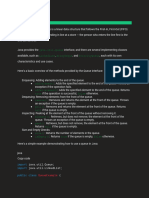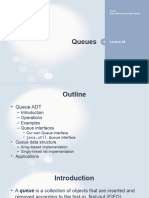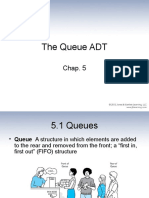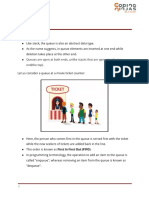0% found this document useful (0 votes)
49 views11 pagesJava BlockingQueue Guide
The Java BlockingQueue interface extends the Queue interface and allows operations to wait until they can be successfully performed, such as deleting an element from an empty queue. Implementations of BlockingQueue include ArrayBlockingQueue and LinkedBlockingQueue, which provide various methods for adding, removing, and querying elements, some of which can block operations if the queue is full or empty. The document also provides an example of using ArrayBlockingQueue to insert and remove elements with appropriate handling of exceptions.
Uploaded by
Namit GargCopyright
© © All Rights Reserved
We take content rights seriously. If you suspect this is your content, claim it here.
Available Formats
Download as PDF, TXT or read online on Scribd
0% found this document useful (0 votes)
49 views11 pagesJava BlockingQueue Guide
The Java BlockingQueue interface extends the Queue interface and allows operations to wait until they can be successfully performed, such as deleting an element from an empty queue. Implementations of BlockingQueue include ArrayBlockingQueue and LinkedBlockingQueue, which provide various methods for adding, removing, and querying elements, some of which can block operations if the queue is full or empty. The document also provides an example of using ArrayBlockingQueue to insert and remove elements with appropriate handling of exceptions.
Uploaded by
Namit GargCopyright
© © All Rights Reserved
We take content rights seriously. If you suspect this is your content, claim it here.
Available Formats
Download as PDF, TXT or read online on Scribd
/ 11























































































